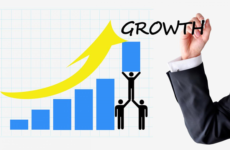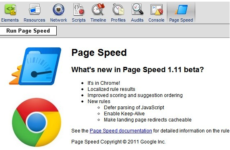When it comes to building an authentic connection with your customers, there is nothing like a good and effective digital channel to help you achieve your business goals. Evolving digital marketing trends for 2019 still include the use of email marketing as an instrumental tool to catapult your business to success and maintain its relevance in the cutthroat world of online marketing.
Among the digital channels at your disposal, email marketing gives the best avenue for your business to grow a solid customer base, increase conversion rate, and build a lasting relationship—if done right.
There are roughly around 269 billion emails sent every day, a number that speaks volumes when you think about the sheer competition you are up against. But that is why it is effective. This particular channel is widely used by billions of people all over the world.
Emails sent by businesses to potential customers that drive them to take action and convert them into paying customers are the foundation of an email marketing campaign. Its primary role is to engage with the customers, establish brand credibility, and build a relationship that goes beyond the buying cycle.
Stats show that two-thirds of customers ended up making a purchase after being exposed to one or more email marketing messages. Although it might sound so easy, running an email marketing campaign has its challenges too.
As a marketer and business owner, it is important for you to know how to leverage the power of email marketing campaign to achieve business goals, whether it is for brand awareness, content promotion, lead generation, product marketing, or lead nurturing. So how do you build an effective and successful email marketing strategy?
Identifying Your Goals
It is not possible to develop a sound strategy without setting your goals. Ask yourself this question — what are you trying to achieve from your email marketing campaign?
If you want to expand the customer base by growing the email list, then an email marketing campaign is the way to go. The same is true if you want to boost engagement for your content or nurture existing customers by giving them something valuable. Some email marketing campaigns aim to send customers on a journey where the end goal is to sell a product or service.
Whichever goals you may have, knowing what you want and need out of your email marketing campaign can send you on the right path.
Defining Your Audience
After putting goals in place, it is now time to determine the target market. Who are your potential customers? What can your product or business do to solve their problems and improve their lives? By researching your buyer personas and finding out what they need, you will be able to adapt your campaign accordingly.
Starting Your Email List
Before you can run your campaign, you need to have the list of your prospects’ emails. How do you get this list? Simple. All you need to do is to convince them to sign up to your email list by providing them with something of value.
For example, you are in the real estate business. You know that people who are buying homes research a lot of information about the home buying process. Why not create a first home buyers’ guide for potential customers that they can download in exchange for email information?
Just remember that when you are trying to get them to subscribe to your email list, you must give something back. After all, they give you permission to send them relevant content, so the least you can do is to deliver it.
Making Your Opt-in Forms Enticing
In relation to building your email list, creating an opt-in form is necessary. Make sure it can attract potential leads so they will willingly give you email addresses and sign up to your email list.
You must consider the design of your form, making sure that it is attractive and can easily grab attention. Your copy should entice but never deceive so try to be as honest as possible. Do not try to promise them something you cannot deliver.
Segmenting Your Email List
If you have thousands of email subscribers, chances are, not all of them have the same interest and preferences. By segmenting your email list, you are ensuring that the emails you will be sending are sent to the right people at the right time, avoiding the disaster of losing subscribers.
The customer buying cycle is divided into different levels. Not all of your subscribers are on the same level of readiness to make a purchase. You need to take them step by step through the customer buying cycle process. Email segmentation is the best way to achieve this.
Choosing Your Email Marketing Type
There are many types of email marketing campaigns. Identifying which one will suit your goals best can help a lot in narrowing down the field.
There is the promotional email which puts your products or services forward. They have one goal — to promote your brand and make a sale.
There is also what they call the relational email where your subscribers expect to receive what you have promised, whether it is a monthly newsletter, a discount coupon, or relevant resources.
Transactional emails, on the other hand, are usually triggered by the subscribers’ actions. This type of email can be a welcome and thank you message for the subscribers after signing up to the email list or order confirmations.
Giving Your Email a Touch of Personalization
After segmenting your email list, it is time to tailor each email to your segmented customers. Adding a personalized touch to emails can work wonders to your campaign, generating higher open and click-through rates.
Some of the ways to personalize emails include using the first name in the subject line or in the greeting, sending relevant information in relation to where the clients are in the buying cycle, and including appropriate call-to-action.
Picking the Right Automation Tool
Audience segmentation and targeted campaigns are easier to pull off if you have a good automation tool. You do not have to send emails manually to different segmented lists. Automation tools make it possible for emails to be sent automatically after an action is made.
For example, take subscribers who signed up to your opt-in form. Once they hit the sign up button, the subscribers will automatically receive an email confirming their subscription and thanking them for joining the list.
Setting up the actions and triggers will ensure that your automated campaign is run smoothly. Most automation companies have workflow tools that can tell when a subscriber signed up, downloaded the offer, opened an email, and many more. It can send a series of emails, triggered by the action of the subscriber.
Setting a Consistent Schedule
How often are you going to send emails to subscribers? Will it be weekly or monthly? You need to know this information so you can tell your email list upfront and set proper expectations. Sticking to your schedule consistently can do a lot to strengthen customers’ trust as they will be looking forward to receiving an email from you.
Measuring Your Campaign’s Results
You cannot run a campaign without knowing the outcome. Measuring the success of your strategy is an important aspect of marketing. This is where you can determine whether it is effective or not and to make changes if necessary. Analyzing where you did it right or wrong can help you adjust campaigns to yield better results.
Bottom Line
Email marketing campaigns are extremely useful, especially if you want to step up your digital marketing strategy. Remember; email can drive revenue with the minimal cost so including it in your online strategy and doing it properly can ensure you are maximizing the return on investment, converting more customers than any other marketing channel.





